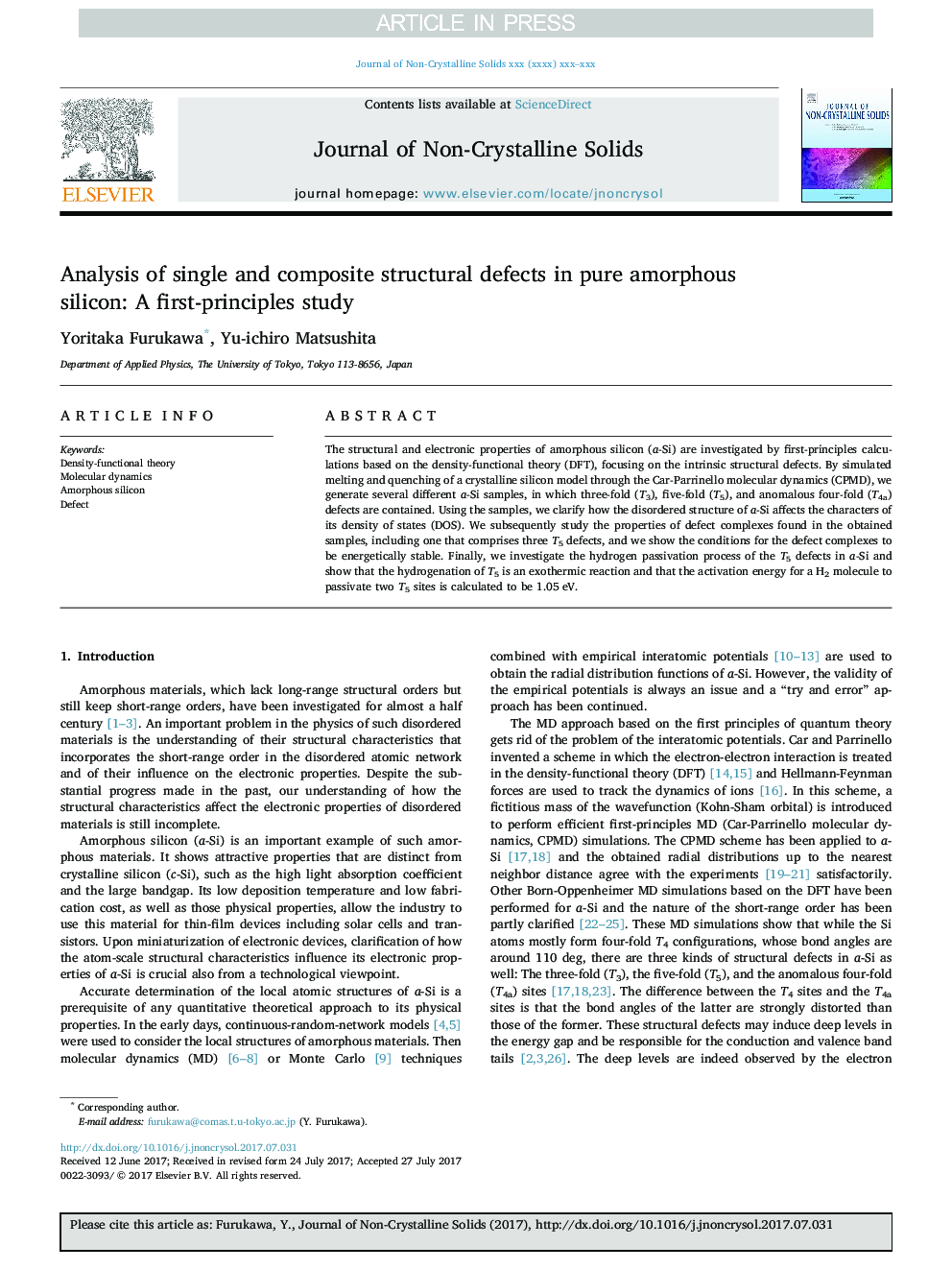| Article ID | Journal | Published Year | Pages | File Type |
|---|---|---|---|---|
| 5441151 | Journal of Non-Crystalline Solids | 2017 | 10 Pages |
Abstract
The structural and electronic properties of amorphous silicon (a-Si) are investigated by first-principles calculations based on the density-functional theory (DFT), focusing on the intrinsic structural defects. By simulated melting and quenching of a crystalline silicon model through the Car-Parrinello molecular dynamics (CPMD), we generate several different a-Si samples, in which three-fold (T3), five-fold (T5), and anomalous four-fold (T4a) defects are contained. Using the samples, we clarify how the disordered structure of a-Si affects the characters of its density of states (DOS). We subsequently study the properties of defect complexes found in the obtained samples, including one that comprises three T5 defects, and we show the conditions for the defect complexes to be energetically stable. Finally, we investigate the hydrogen passivation process of the T5 defects in a-Si and show that the hydrogenation of T5 is an exothermic reaction and that the activation energy for a H2 molecule to passivate two T5 sites is calculated to be 1.05Â eV.
Related Topics
Physical Sciences and Engineering
Materials Science
Ceramics and Composites
Authors
Yoritaka Furukawa, Yu-ichiro Matsushita,
